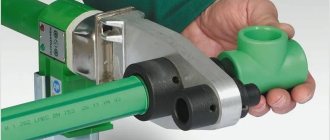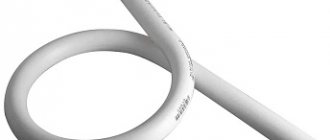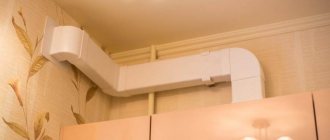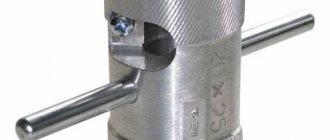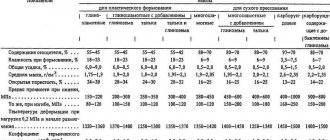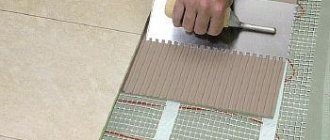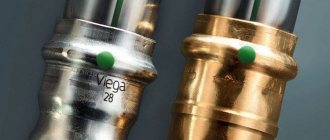Polypropylene is a type of plastic that is very difficult to glue. And only recently adhesive for polypropylene appeared on the market, and its range is quite wide.
The main method of joining parts made of this material is the hot welding method. Many people had to observe it when installing hot or cold water or when laying sewerage. This method allows you to quickly and reliably connect polypropylene pipes with each other, but requires special equipment and is quite dangerous, because you have to work with heating elements.
What glue to use to glue polypropylene (click to enlarge)
The use of an adhesive composition allows you to no less reliably connect plastic parts together without resorting to the use of special equipment. In addition, with the help of such adhesives you can connect not only new and large elements, but also make minor repairs.
Types of adhesives for polypropylene
Adhesives for polypropylene have their own classification. Based on their composition and interaction with the bonded surface, they are divided into two types:
- thermosetting – consisting of resins (epoxy, polyester or thermosetting) and which, when heated or exposed to special hardeners and accelerators, harden irreversibly. An example is anaerobic glue;
- thermoplastics consist of either rubber mixtures or resins. Due to its ability to melt when heated, filling voids, and to harden when cooled, it is suitable for gluing elements with an uneven surface.

Two-component composition (click to enlarge)
Polypropylene adhesives are also available:
- single-component;
- two-component.
An adhesive composition sold in a ready-to-use form is called one-component. As a rule, they are sold in a tube and their use does not require prior preparation. Two-component ones are characterized by the separation of the components into two elements, which must be mixed before gluing the polypropylene. Due to the fact that the components do not react until the very moment of its use, the shelf life of a two-component adhesive is significantly longer than that of a one-component adhesive.
Important! The quality of a glued seam directly depends on the quality of the product used. Therefore, the choice of glue must be approached very responsibly, giving preference to trusted manufacturers with an impeccable reputation.
Features of superglue
We became acquainted with superglue relatively recently, not realizing that it was invented back in 1942 in the USA. True, the innovation gained popularity in its homeland only when it was 10 years old. Now we can’t even imagine what we would have done without superglue...
The magical effect is due to the presence of cyanoacrylate in it, which is a derivative of cyanoacrylic acid. The instant hardening of the product is explained by the fact that there are no solvents in the composition.
Types of miracle glue
Depending on the spectrum of action, there are the following types of superglue:
- One-component. The most popular type is based on ethyl cyanoacrylate. It sets quickly, but it takes a day to complete the process, during which the active substances continue to work. The one-component type is good for restoring small parts, but if you need to glue large surfaces to each other, the product may not cope.
- Two-component. You will immediately notice the difference, since this composition is sold in the form of a set - two tubes. One of them contains glue itself, the other contains an alkaline agent. Before use, both products must be combined, and then the glued parts must be treated with the mixture. In this case, you need to do all this in 2 minutes, and hold the connected fragments, pressing, for at least several seconds. Using tubes separately will not bring the expected result.
You may be interested in: Table soda: healing properties, uses and healing
The secret of interaction with soda
Why does tandem work better? It's a matter of chemistry: cyanoacrylate with sodium bicarbonate, after reacting, produces heat that improves gluing, making the joint more durable, and the process itself is accelerated. The composition and action of the combination of two substances is similar to acrylic-like plastic, which is capable of filling the joint space so monolithically that the junction itself may become inaccessible to view.
When it is necessary to tightly glue plastic, to compensate for missing small parts, this tandem has no equal. And if you consider how easy it is to use such a composition, then it can be safely called a leader among similar products.
Gluing elements - step-by-step description
How to use a certain glue is written on its packaging. But there are rules common to all types:
- The surfaces to be bonded are cleaned of burrs and degreased using acetone or industrial alcohol. This procedure must be carried out without fail, even if the glue manufacturer does not insist on it;
- the adhesive composition is applied evenly in a thin layer to the surface;
- the parts to be glued are kept for approximately three minutes (depending on the type of product and the manufacturer), and then connected;
- the connected elements are left for the time necessary for complete drying.
Watch the video to learn about the features of the stages:
Important! You need to wear protective gloves when working, as getting glue on your skin can cause irritation or an allergic reaction.
Varieties
Cold welding products differ in their reaction to heat.
Thermoset
The composition includes epoxy, polyester, oligomeric resins. Thermosetting adhesive hardens under the influence of high temperature or a hardener. The cured product can withstand heat, cold and shock.
To disassemble a structure secured with thermosetting adhesive, it will have to be cut.
Thermoplastic
Adhesives consist of rubber and become plastic at high temperatures. They are not used in hot environments. The hardened glue firmly connects the structural elements.
How to glue polypropylene pipes
Bonding polypropylene pipes has its own specifics. To work, you will need a pipe cutter, a glue gun and a brush with natural bristles. Let's look at this issue in more detail.
Work process:
- cutting pipes using a pipe cutter in accordance with the required dimensions;
- cleaning edges and cuts from roughness (you can use sandpaper);
- marking. To do this, you need to align the structure and mark the gluing points;
- degreasing the surfaces on which the glue will be applied;
- applying glue. If can glue is used, it must be applied with a brush. If you purchased glue in a tube, you will need a special gun;
- we will connect the pipeline elements, focusing on the marks made earlier;
- removing excess glue.
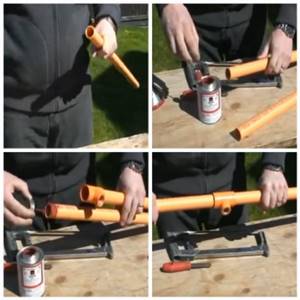
The process of gluing polypropylene pipes (click to enlarge)
You can check the reliability and tightness of the connections no earlier than a day later by passing a stream of water under pressure through the structure.
To repair a pipeline, you can use special couplings that fit into the damaged area using polypropylene pipe glue. To avoid having to turn off the water supply during work, it is better to use a collapsible coupling.
Step-by-step instructions for using the composition
Before you start gluing plastic pipes, you should make sure that there is normal air circulation in the room and the temperature is between 5-35°C.
In addition to materials, the work will require some tools:
- for marking - marker and measuring tools;
- for cutting pipes - pipe cutters, jigsaw or hacksaw;
- for cleaning surfaces - sandpaper;
- for degreasing – solvent;
- to apply the composition - the glue itself, a brush made of natural bristles (some glues, including Tangit, are immediately equipped with a suitable brush) or a glue gun.
Surface preparation is an extremely important stage in gluing parts. They should be perfectly smooth and fat-free. If contaminants remain on the pipe, the glue will only stick on top of them and form a film, but there will be poor contact with the surface itself. This may cause leaks to develop over time.
PVC pipes are prepared for upcoming gluing in several steps:
Pipeline bonding technology:
Pipe marking. Before starting the installation of the pipeline, a design and detailed diagram must be prepared. The pipes are measured and marked using them.
Cutting pipes. The next stage is preparing sections of the required length. It is best to use pipe cutters, but other tools will work. The main thing is that the cutting areas are level. The edges are cleaned with sandpaper.
Bonding system elements. The most convenient way is a glue gun. With its help, you can evenly and accurately distribute the composition over the surface. If you don't have a gun, you should use a brush. The glue is applied so that in the selected area there are no areas free from it.
Connecting parts. To connect, the system elements are pressed against each other for at least 20-30 seconds. During this time, the composition thickens and becomes more viscous. Then the part can be postponed for a day
It is important that the compression force is sufficient, otherwise the joint may leak during operation.
Pipe cleaning. No matter how carefully the adhesive is applied, it may extend beyond the intended area.
It is removed immediately before it hardens. A damp cloth, rag or sponge is suitable for this.
Polymerization of the composition. It takes 20-24 hours for the glue to harden, so it is better not to touch the system before. You cannot move, separate or reconnect parts, or run water through pipes.
When the glue polymerization process is complete, you should check the efficiency of the system. It is launched in operating mode and all joints are carefully examined.
If it doesn't leak anywhere, everything is fine. If leaks are detected, the connections are additionally sealed.
An important nuance: when gluing parts you need to work extremely clearly. The pipeline section is inserted into the fitting in one motion. It should not be sharp, but fast. When the pipe is inserted, it should not be wiggled or twisted so as not to reduce the strength of the connection.
Characteristics of some types of glue for polypropylene pipes
Today there is a large selection of means that can be used to glue polypropylene and polyethylene. Let's take a closer look at the characteristics of some of them.
Cosmoplast 500
This is a one-component transparent adhesive composition that can be used for both domestic needs and in production. High adhesive properties make it possible to connect parts at an angle of 45 degrees, which has led to its popularity among masters producing plastic windows. It is distinguished by the short time required for drying: 3 seconds - initial setting and 16 hours - complete hardening (at a temperature of 20 degrees).
Dow Corning 7091
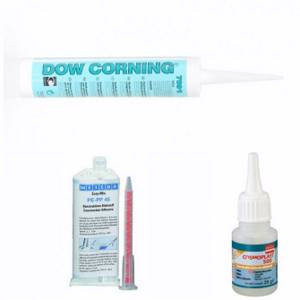
Types of adhesives for polypropylene (click to enlarge)
This one-component product is an adhesive-sealant type. If the thickness of the applied layer does not exceed 5 mm. then Dow Corning 7091 acts as an adhesive, and with a thickness of up to 25 mm – a sealant. This composition is best used for gluing homogeneous materials. The process of gluing polypropylene with this composition is not much different from other adhesives. The resulting seam is elastic, durable, oil- and moisture-resistant, and is also able to withstand temperature changes from -55 to 180 degrees Celsius.
WEICON Easy-Mix PE-PP
A universal two-component adhesive for polypropylene pipes will do an excellent job of joining polyethylene, polyamide, PVC, fiberglass and other materials and plastics. Created on the basis of methyl acrylic and has high adhesion. At room temperature it hardens completely after 24 hours.
This is, of course, not the entire list of PP adhesives on the market. And before gluing polypropylene, it is necessary to become more familiar with the features of adhesive compositions. This will eliminate possible errors that could lead to poor-quality gluing.
Composition and principle of action of adhesive materials
Any adhesive for polypropylene pipes is based on polyvinyl chloride, which dissolves in tetrahydrofuran, methyl ethyl ketone and cyclohexanone.
In addition, various additives are added to two-component adhesive materials to increase the efficiency of adhesion, as well as to control the setting time and viscosity of the mixture. During the curing process of the glue, solvents evaporate and chains of PVC polymer molecules located in the parts being glued intertwine. In this way, it is possible to obtain a connection that has the same characteristics as a solid PVC pipe.


